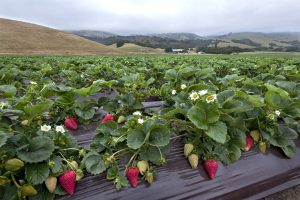The discovery of fusarium wilt race 2 in strawberry fields has prompted several avenues of research to better understand the issue. This particular pathogen presents a notable threat to strawberry production, as it can still infect otherwise resistant cultivars. Research Plant Pathologist at the USDA Agricultural Research Service, Peter Henry said one of the first steps has been to identify all the fields that are affected by the pathogen.
“We’re achieving this by surveying present and past strawberry fields, by going out and collecting plant samples, as well as testing samples that have already been collected from previous years,” said Henry. “A lot of diagnostic labs will maintain libraries of sample extracts that cover hundreds of fields over several years.”
Part of the identification process has been the development of a qPCR method and an RPA method for diagnosis. Fusarium wilt race 2 is genetically similar to other strains that are not pathogenic to strawberries, so the development of an accurate test has taken some time. Beta testing is underway with diagnostic labs and Henry said the testing methods should become widely available sometime in 2024. “We’re really in the early stages of understanding where it came from, how it’s spreading, and how to deal with it. So, I’m really happy that we’ve made a lot of progress on these diagnostic tools. That’s going to be the first step to being able to do any other research,” Henry noted.
Another avenue of research is screening germplasm from public and private strawberry breeding programs. The goal is to identify a form of resistance to the fusarium wilt race 2 pathogen. Thus far, the efforts have not yielded any positive findings for resistance. Henry said the research will be expanded further.
“This fall we’ll be testing about 400 heirloom and wild strawberry varieties that encompass a huge breadth of diversity in the strawberry germplasm. That work will be done in collaboration with the UC Davis Strawberry Breeding Program,” Henry explained. “We’re very hopeful that from that very broad look, we will be able to find something.”

Brian German
Ag News Director / AgNet West











